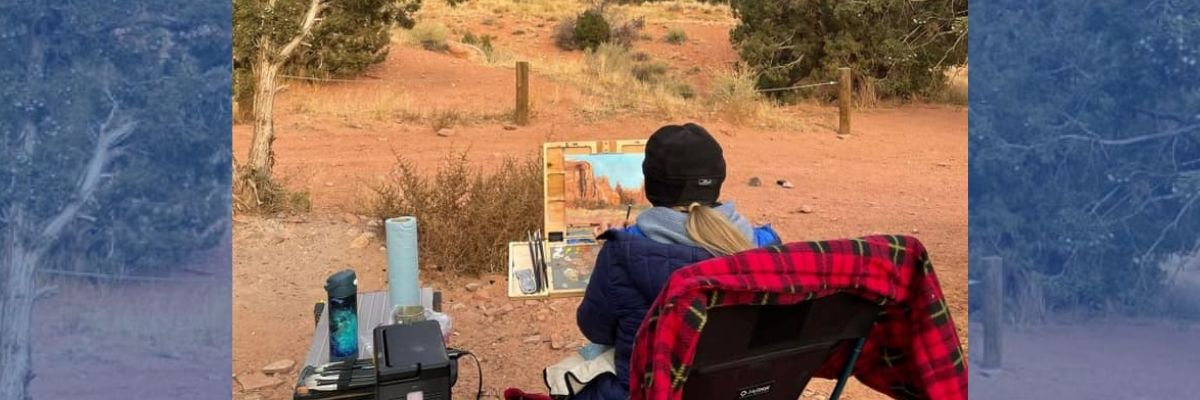Crafting your Artist Bio That People Will Want To Read
When it comes to presenting ourselves, especially as artists, one of the most crucial elements is our biography, or "bio." However, many of us often overlook the opportunity to transform our bios into compelling narratives that truly reflect who we are. Instead of merely listing facts or crafting an artist statement, your bio should tell a story—a story that engages, entertains, and connects with your audience.
TASA Member, Cindy Compert, Plein Air Painting
What Is a Story Bio?
A story bio is more than just a collection of events; it is a narrative that invites readers into your world. It provides an account of who you are, what drives you, and the experiences that shape your artistic journey. This narrative should feel personal and relatable, creating a connection with your audience that goes beyond your artwork.
Why a Story Matters:
Connection: A well-crafted story bio helps potential collectors and fans feel connected to you as an individual, not just as an artist.
Engagement: In a world where attention spans are dwindling, a captivating narrative can hook readers and keep them interested.
Personality: Your bio is an opportunity to showcase your unique voice and personality, allowing readers to see the human side of your artistry.
What Your Bio Shouldn't Be
Many artists fall into the trap of writing a standard biography that resembles a résumé or an academic statement. This format typically includes:
A list of accomplishments
A chronological history of experiences
Overly formal language that lacks personality
Instead, your bio should avoid being a dry recounting of your life. It should not read like a CV or an artist statement. While those elements may have their place, your story bio should focus on engaging the reader through narrative.
Elements of a Compelling Story Bio
First-Person Perspective: Writing in the first person makes your bio feel more personal. It invites the reader into your world as if you are having a conversation.
Example: “I grew up in a small town, where my love for art began with doodles on the back of my school notebooks.”A Hook: Start with an intriguing statement or question that captures attention. Remember, studies show that 86% of readers don’t read past the second sentence.
Example: “What if I told you that my journey as an artist began with a broken camera and a chance encounter on a rainy day?”Narrative Arc: Just like any good story, your bio should have a beginning, middle, and end. Introduce yourself, share your journey, and conclude with where you are now and what you aspire to do.
Authenticity: Stay true to your voice; if your art has a dark tone, let your bio reflect that. If humor is your style, weave it into your narrative.
Example: “While my art often explores themes of isolation, I find humor in everyday life, believing that laughter can coexist with melancholy.”Transition to Your Art: Your bio should introduce who you are and then seamlessly transition into discussing your work.
Example: “Through my lens, I aim to capture the beauty of fleeting moments. Each photograph tells a story that resonates with my experiences.”
Crafting a story bio is an essential part of establishing your identity as an artist. By focusing on storytelling rather than a list of accomplishments, you can create a compelling narrative that draws in your audience and builds a genuine connection. Remember, your bio is an introduction to who you are, what inspires you, and why your art matters. So take the time to reflect on your journey, and let your story shine through.
Actionable Tips:
Write your bio in first-person.
Start with a hook to grab attention.
Use a narrative structure to guide the reader.
Be authentic and true to your voice.
Transition smoothly from your story to your art.
By following these guidelines, you can create a story bio that resonates with your audience and helps you stand out in a crowded art world.
Overwhelmed by your bio? Get help by joining our community and working with Jason!



